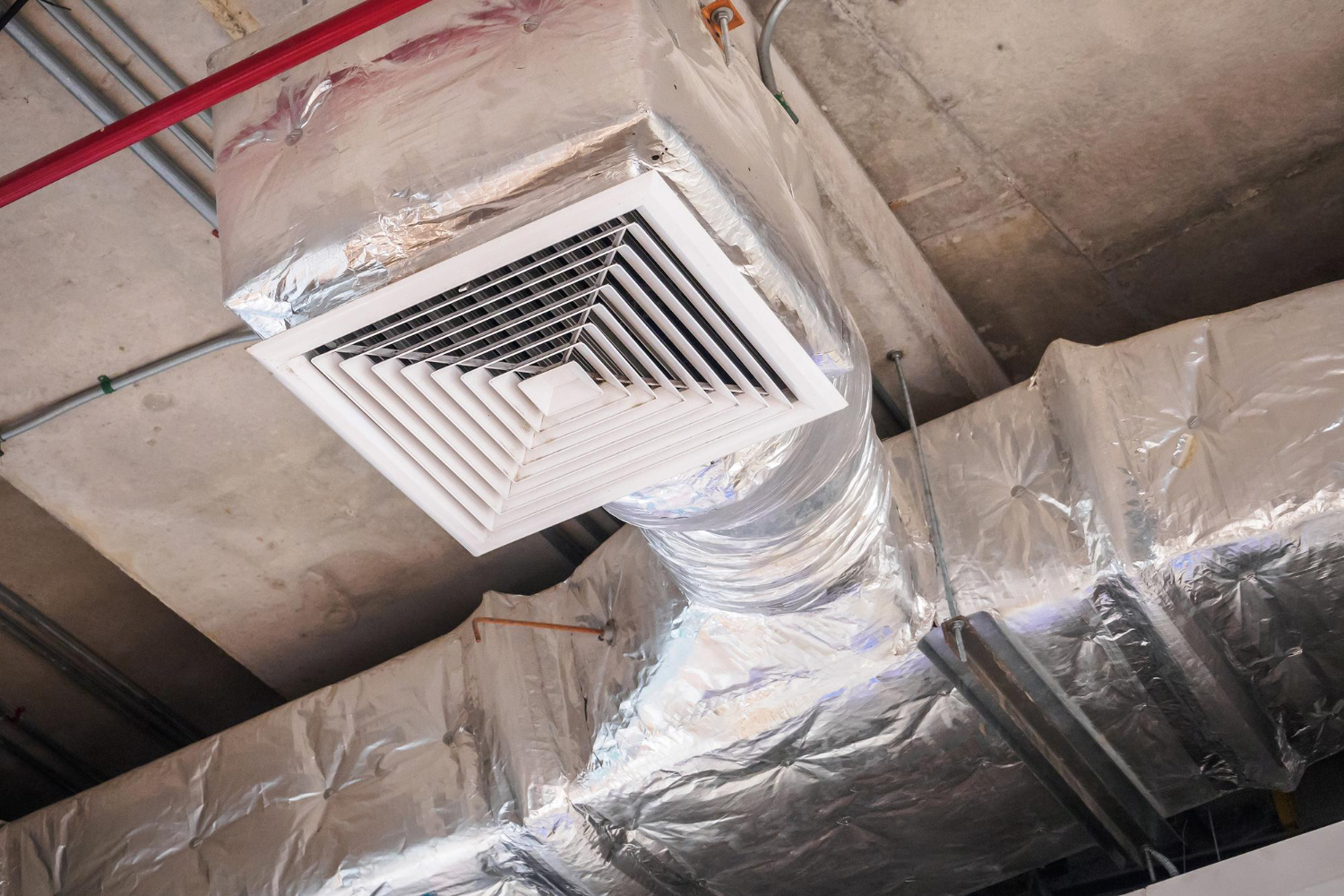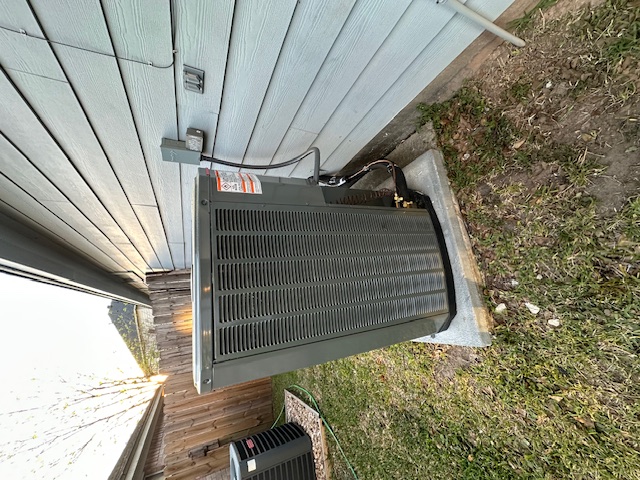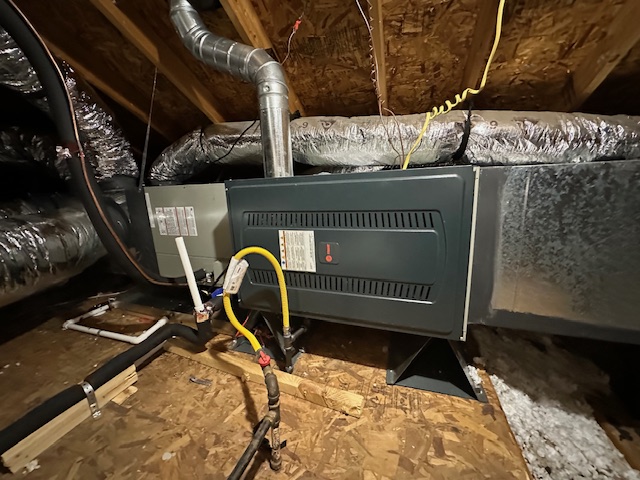When summer heat hits, nothing feels worse than running your air conditioner constantly but still feeling warm spots throughout your home. AC duct sealing service can restore your cooling system's efficiency by fixing leaks that waste up to 30% of your conditioned air. Those gaps and holes in your ductwork let precious cool air escape before it reaches your rooms.
We often overlook our home's ductwork, but these hidden passages play a huge role in comfort and energy bills. Leaky ducts force your AC to work harder and run longer to maintain the same temperature. This creates uneven cooling where some rooms stay hot while others feel fine.
Professional duct sealing involves finding these problem areas and fixing them with specialized materials and techniques. We'll walk you through what this service includes, how long it takes, and what you can expect to pay. You'll also learn how to choose the right contractor for this important home improvement project.
Let’s break down the key points you should consider:
- Why air duct sealing is critical for efficient cooling
- What's involved in professional AC duct sealing service
- Understanding the sealing process timeline
- Cost and long-term value of sealing your AC ducts
- Choosing a reliable HVAC duct sealing provider
Keep reading to learn how an AC duct sealing service helps stop air leaks, lower energy bills, and improve home comfort.
Why air duct sealing is critical for efficient cooling
Leaky ducts can waste up to 30% of your cooling energy, driving up electricity bills while leaving rooms uncomfortably warm. Proper sealing creates balanced airflow throughout your home and prevents conditioned air from escaping into unconditioned spaces.
How leaky ducts waste energy and money
Leaky ducts force your HVAC system to work harder than necessary. When conditioned air escapes through gaps and holes, the system runs longer cycles to reach your desired temperature.
This wasted energy shows up directly on your monthly utility bills. We typically see homeowners spending 20-30% more on cooling costs when their ductwork has significant leaks.
Common areas where ducts leak energy:
- Joint connections between duct sections
- Areas where ducts connect to vents and registers
- Flexible duct connections at equipment
- Damaged or poorly installed ductwork
The Department of Energy estimates that sealing ducts can reduce cooling costs by $200-400 annually in most homes. These savings add up quickly over the system's lifetime.
Leaky ducts also create pressure imbalances that make your system work inefficiently. When supply ducts leak, the system cannot deliver proper airflow to rooms that need cooling most.
Signs your HVAC system may need sealing
Uneven temperatures between rooms often indicate ductwork problems. If some areas stay warm while others feel too cold, leaked conditioned air may be the culprit.
Higher than normal energy bills suggest your system is working harder to maintain comfort. We recommend comparing current bills to previous years during similar weather periods.
Physical signs to check for:
- Visible gaps or disconnected duct sections
- Dusty areas around vents and registers
- Rooms that never reach the thermostat setting
- Excessive dust buildup throughout the home
Poor air quality can result from leaky return ducts. These leaks pull in dust, allergens, and humid air from unconditioned spaces like attics or crawl spaces.
Listen for unusual sounds from your ductwork. Whistling or rushing air noises often indicate air escaping through openings that should be sealed.
The role of duct sealing in balanced airflow
Balanced airflow ensures each room receives the right amount of conditioned air. When ducts leak, this balance gets disrupted and some areas receive inadequate cooling.
Proper sealing helps maintain design airflow rates throughout your ductwork system. This allows your HVAC system to operate as engineers intended when they sized the equipment.
Key airflow benefits:
- Consistent temperatures in all rooms
- Proper air circulation and mixing
- Reduced hot and cold spots
- Better humidity control
We see improved home comfort when sealed ducts deliver steady airflow. Your system can maintain set temperatures without the constant cycling that wastes energy.
Sealed ductwork also prevents negative pressure issues. These problems can cause drafts, door slamming, and difficulty maintaining comfortable conditions.
Benefits of a fully sealed HVAC system
Energy efficiency improves dramatically with properly sealed ductwork. Your system uses less electricity to achieve the same comfort levels throughout your home.
Measurable improvements include:
- 15-30% reduction in cooling costs
- More consistent room temperatures
- Improved indoor air quality
- Extended equipment lifespan
Better air quality results when sealed ducts prevent contaminated air from entering your system. This reduces allergens, dust, and humidity that can affect your family's health.
Your HVAC system experiences less wear and tear when ductwork is properly sealed. The equipment runs shorter cycles and maintains more stable operating conditions.
Sealed ducts also improve humidity control during summer months. This prevents moisture problems that can lead to mold growth and uncomfortable indoor conditions.
We find that homeowners notice immediate comfort improvements after professional duct sealing. The investment typically pays for itself within 2-3 years through reduced energy costs.
What's involved in professional AC duct sealing service
Professional duct sealing starts with finding leaks in your ductwork using special tools and testing methods. Technicians then use different sealing methods to fix these problems, from manual repairs to complete duct encapsulation systems.
How technicians identify leaks in ductwork
We use a duct blaster test to find air leaks in your system. This machine pressurizes your ductwork and measures how much air escapes.
The technician seals all your vents and return grilles first. Then they connect the duct blaster to your system and turn it on.
Common leak detection methods include:
- Smoke pencils to see air movement
- Thermal imaging cameras
- Pressure testing equipment
- Visual inspection of joints and connections
Most leaks happen at duct joints, connections, and damaged sections. We can measure exactly how much air you're losing before and after sealing.
The test tells us if your ducts need sealing work. The U.S. Department of Energy states that 20–30% of the air moving through typical duct systems is lost through leaks, holes, and poor connections—resulting in higher utility bills and uneven home comfort. Sealing and insulating accessible ducts with mastic or metal tape helps prevent this loss and improve efficiency.
Methods used to seal HVAC ducts
We use several sealing methods depending on your ductwork condition and budget. Manual sealing works well for small repairs and accessible areas.
Mastic sealant is the most common manual method. We brush this thick paste onto joints and small holes. It dries hard and lasts for years.
Metal tape works for straight seams and joints. We never use regular duct tape because it fails quickly.
Aeroseal technology blows sealing particles through your ducts. The particles stick to leak edges and build up until holes close. This method reaches areas we can't access by hand.
Rigid ductwork gets different treatment than flexible ducts. We might replace badly damaged sections instead of sealing them.
The difference between manual sealing and duct encapsulation
Manual sealing targets specific leaks and problem areas in your ductwork. We apply mastic or tape directly to visible joints and holes.
This method costs less but takes more time. We can only seal areas we can reach and see.
Duct encapsulation covers your entire duct system with sealing material. We spray or inject sealant throughout the whole network.
Encapsulation seals leaks we can't see or reach. It works faster than manual methods for whole-house sealing.
Key differences:
Method
Coverage
Cost
Time
Manual sealing
Targeted spots
Lower
Longer
Duct encapsulation
Complete system
Higher
Faster
Both methods improve your system's efficiency. We recommend the best option based on your ductwork condition and air loss amount.
Understanding the sealing process timeline
Most AC duct sealing jobs take 4-8 hours to complete. The exact service timeline depends on your home's size and duct system complexity.
How long the sealing process typically takes
Standard residential homes typically require 4-6 hours for complete duct sealing. We start by inspecting your entire system to locate all leaks.
The actual sealing work takes the most time. We seal each leak point using specialized materials and equipment.
Larger homes with complex duct systems may need 6-8 hours. Multi-story houses often have more extensive ductwork that requires additional attention.
Here's what affects the process duration:
- Home size - Bigger homes have more ducts to seal
- Number of leaks - More leaks mean longer repair times
- Duct accessibility - Hard-to-reach areas slow down the work
- System age - Older ducts often need more extensive sealing
We complete most jobs in a single day. Small apartments might only need 2-3 hours, while large homes could take up to 8 hours.
After sealing, we test the system to ensure all leaks are properly sealed. This final check adds about 30 minutes to the total timeline.
Cost and long-term value of sealing your AC ducts
Professional duct sealing requires an upfront investment that typically ranges from $1,500 to $4,000 in Houston. The long-term energy savings and improved system performance make this investment worthwhile for most homeowners.
Average cost of HVAC duct sealing in houston
Most Houston homeowners pay between $1,500 and $3,500 for professional duct sealing services. The typical cost averages around $2,200 for a standard single-story home.
Larger homes with complex ductwork can cost up to $4,000 or more. Two-story homes usually fall in the $2,500 to $3,500 range due to additional ductwork.
Basic duct sealing includes:
- Duct inspection and testing
- Sealing of visible leaks
- Mastic or metal tape application
- Final system testing
Some contractors charge by the linear foot of ductwork. This typically ranges from $8 to $15 per linear foot in the Houston area.
What impacts pricing: From duct access to home size
Several factors affect the final cost of duct sealing. Home size is the biggest factor since larger homes have more ductwork to seal.
Key pricing factors include:
- Square footage of your home
- Ductwork accessibility in crawl spaces or attics
- Age and condition of existing ducts
- Type of sealing method used
- Labor complexity for hard-to-reach areas
Ductwork in tight crawl spaces or poorly ventilated attics costs more to seal. Workers need extra time and safety equipment for these difficult areas.
Older homes often have more leaks and damaged sections. This requires additional materials and labor time to properly seal all problem areas.
Is duct encapsulation worth the extra investment?
Duct encapsulation costs $3,000 to $6,000 but provides superior protection compared to basic sealing. This process wraps ducts in insulation and vapor barriers.
Encapsulation benefits include:
- Better temperature control
- Reduced condensation problems
- Improved indoor air quality
- Longer duct system lifespan
We recommend encapsulation for homes with ducts in unconditioned spaces. Attics and crawl spaces expose ducts to extreme temperatures and humidity.
The extra cost pays off through lower energy bills and fewer repair needs. Most homeowners see a return on investment within 5 to 7 years.
How sealing cuts energy bills and improves system lifespan
Lawrence Berkeley National Laboratory reports that residential duct sealing can reduce heating and cooling energy use by around 10–20%, with attic or crawlspace duct sealing delivering up to 15–20% savings.
A typical Houston home saves $300 to $600 annually on cooling costs.
Energy savings come from:
- Less conditioned air loss
- Reduced system runtime
- Better temperature consistency
- Improved airflow efficiency
Sealed ducts also extend your AC system's lifespan. Your equipment works less hard to maintain comfortable temperatures throughout your home.
We often see AC systems last 3 to 5 years longer when ducts are properly sealed. This delays expensive equipment replacement and reduces repair frequency.
The return on investment typically occurs within 3 to 5 years through energy savings alone. Additional benefits like improved comfort and air quality provide extra value.
Choosing a reliable HVAC duct sealing provider
Finding the right HVAC contractor makes the difference between a quick fix and lasting comfort. We need to evaluate providers based on their experience, pricing transparency, and ability to integrate sealing work with broader system improvements.
What to ask before booking your sealing service
Before we hire any HVAC contractor, we should ask about their duct sealing experience and methods. A quality provider will explain their testing process and show us exactly where air leaks exist.
We need to request a detailed estimate that breaks down labor and materials. This helps us avoid surprise charges later.
Key questions to ask:
- How many years have you been sealing ducts?
- What equipment do you use to find leaks?
- Do you provide before and after efficiency testing?
- Is your work guaranteed?
Licensed contractors should carry insurance and provide references from recent jobs. We can check their Better Business Bureau rating and read online reviews.
The best providers will walk through our home first. They examine our ductwork and explain what needs fixing before giving us a price.
Why Horizon Air Solutions offers long-term duct sealing value
Horizon Air Solutions focuses on comprehensive duct sealing that lasts for years. We benefit from their systematic approach to finding and fixing air leaks throughout our system.
Their technicians use professional-grade sealants that won't crack or fail over time. This means we don't need repeat service calls for the same problems.
What sets them apart:
- Advanced leak detection - They use pressure testing to find hidden leaks
- Quality materials - Industrial sealants that last 10+ years
- Complete system evaluation - They check all ductwork, not just obvious problems
- Performance guarantees - Written warranties on their sealing work
We save money long-term because their thorough approach prevents future air loss. Their upfront investment pays off through lower energy bills.
How duct sealing ties into whole-home HVAC upgrades
Duct sealing works best when we plan it with other HVAC upgrades. Sealing leaky ducts before installing a new system ensures maximum efficiency from day one.
We should consider sealing when replacing our furnace or air conditioner. The improved airflow helps new equipment work at peak performance.
Smart upgrade combinations:
- New HVAC system + duct sealing
- Insulation upgrades + duct sealing
- Smart thermostat + sealed ducts
- Air quality improvements + duct sealing
Sealed ducts make every other upgrade more effective. We get better temperature control and lower energy costs when air flows where it should.
Some contractors offer package deals for multiple services. We can save money by bundling duct sealing with planned equipment replacements.
When to combine sealing with a full HVAC inspection
A complete HVAC inspection reveals problems that duct sealing alone won't fix. We should schedule both services when our system is over 10 years old or showing performance issues.
The inspection covers components like heat exchangers, electrical connections, and refrigerant levels. This helps us understand if sealing will solve our comfort problems.
Best times for combined service:
- Before buying a new home
- When energy bills spike unexpectedly
- After major home renovations
- When some rooms stay hot or cold
We discover maintenance needs during inspection that could affect sealed ducts later. Fixing these issues first protects our sealing investment.
Smart contractors will recommend inspection timing based on our system's age and condition. We avoid duplicate service calls by handling both at once.
Conclusion
We've covered why AC duct sealing matters for your home's comfort. Leaky ducts waste energy and make your air conditioner work harder than it should.
Professional sealing services find the hidden leaks you can't see. They use special tools to test your ducts and fix problems the right way.
Most homeowners see results right away. Your house stays cooler without cranking up the thermostat.
We recommend getting your ducts checked every few years. Small leaks turn into big problems if you wait too long.
Professional sealing typically pays for itself through energy savings. The cost depends on your home's size and how much work needs doing.
Don't let leaky ducts ruin your summer comfort. A sealed duct system keeps cool air where it belongs - inside your living spaces.
Schedule your AC duct sealing service today to stop energy waste and restore consistent airflow throughout your home.
Your AC will thank you for it. So will your wallet when those monthly bills go down.











